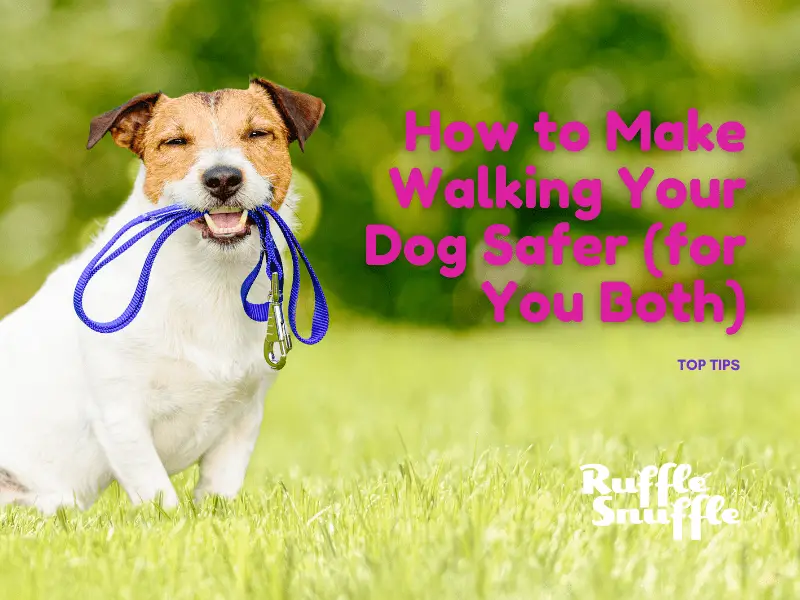Losing their faithful companion is every dog owner’s worst fear. If your dog has gone missing, or if you’ve found a dog without an owner, it’s vital that you alert your neighbours as soon as possible. Luckily, about 90% of all lost pets are found within 12 hours, so long as their owners are actively searching for them! But for the best chance of a happy reunion, it’s critical to take the proper steps. Here’s what to do if you have lost your dog, or possibly found someone else’s.
Lost your dog?
Legally, your dog should always be wearing a collar and tag with your name and address when out in public. As of 2016, it’s now a legal requirement that all dogs and puppies must be microchipped and registered by 8 weeks of age. These are laws put in place for your dog’s safety – a tag and microchip will greatly raise your chances of finding your pup.
What to do if your dog has gone missing:
Report as lost or stolen. Call the microchip database your dog is registered with and report them as lost or stolen. If anyone tries to change the chip details, they will tell you.
Report your dog missing to your local council’s dog warden. They are legally responsible for stray dogs and could have picked up your pooch. Act fast as they typically only keep stray dogs for seven days. After this period, they will start the rehoming process. If no home can be found for them, they may be put to sleep.
Call local kennels and rehoming centres. There’s a chance someone may have found your dog and taken them there.
Search the area. Even if they haven’t seen your dog, alerting the neighbourhood will mean more people looking out for your missing pet. Hand out your contact details to everyone in the area, even the postman.
Make your dog too hot to handle. It’s important to act fast in case your dog has been stolen. The more people who are aware of your missing dog, the harder it becomes for thieves to keep them. Social media is an excellent tool for reaching lots of people quickly. Create a post with details of your missing dog and explain what happened, alongside details of any reward. Don’t just limit the post to your feed. Try to post in local communities and encourage people to share it to reach a wider audience.
Put up posters. After all, not everyone uses social media, so don’t forget the old-fashioned way. Create a ‘lost’ notice and include an up-to-date picture of your dog, alongside any further details.
Check online lost and found websites. Register your dog with DogLost, a free database that will help you find your dog.
Report to the police. If you think your dog has been stolen, report the scam to the police as soon as possible.
Found a dog?
- If you’ve found a dog, check if he has any identification that will help you return him to the owner.
- If you would rather not return the dog directly, call your local authorities dog warden to have them collect the dog.
- If the dog has no tag, take them to a local vet to scan them for a microchip.
- If the dog is chipped, they will contact the owner to arrange a safe return. Also be sure to register the dog as “found” on DogLost.
- If you want to keep the dog, remember it’s a legal requirement to report stray dogs to the local authority. Also, keep your eyes open for signs of fleas, as you don’t want to bring an infestation at home.
- If you fail to do so you could be accused of theft. Losing a dog is incredibly distressing for any owner, so act fast. This will also prevent you from getting too attached to the dog, which could make returning the dog more emotionally difficult.
Keeping your dog safe
A stolen dog can easily be transported out of the area, making the chances of a reunion slim. Therefore, it’s critical to keep your dog safe to prevent theft happening. Here are a few steps you can take to keep your pup safe:
Do not leave your dog unsupervised in public. This includes tying them outside shops or leaving them alone in your car.
Secure your garden. Make sure there are no gaps in fences and any gates are locked.
Vary your walking routes. Changing your route will not only deter thieves who are looking for a pattern, but your dog will enjoy varied routes with new sights, smells and sounds.
Reinforce commands. Safety is a huge part of why we train our dogs. Make sure your dog will come back when called, and reinforce training if necessary. Make sure you proof what they learn so they can perform the behaviour anywhere.
Keep your microchip contact details up to date. This is the most effective way of making sure your pet gets back to you.
- Related Reading: 14 Tips on How To Prevent Your Dog Being Stolen
Final thoughts
If you’ve lost or found a dog, remember that it’s key to act fast. Dogs can move locations very quickly, particularly if they have been stolen. If you’ve found a dog, contact the owner immediately if possible. If not, contact your local authorities. Want to know how to keep your pet safe while on the move? Read our pet safety travel guide here.




